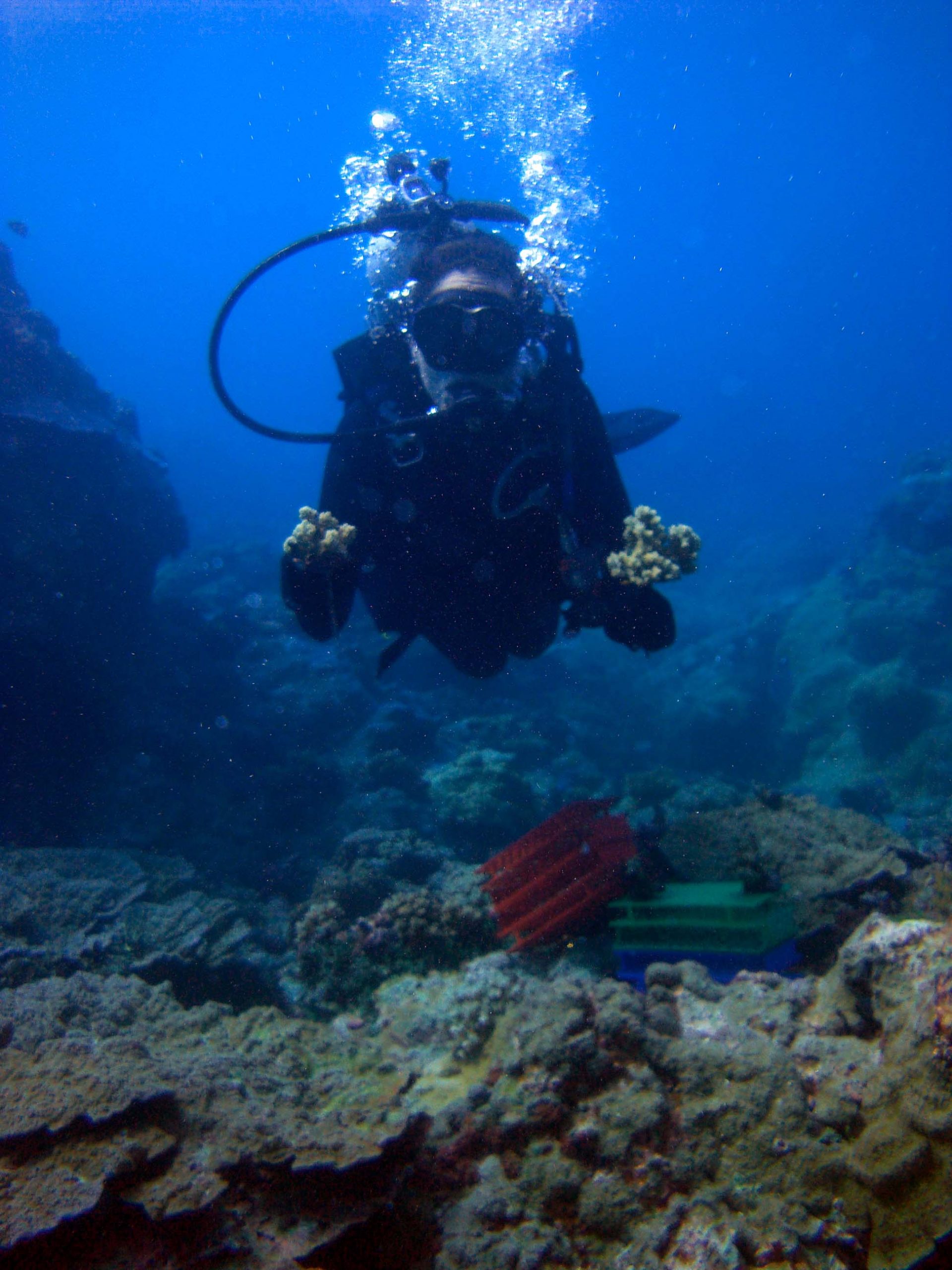
Dr. Nichole Price replaces corals to artificial reefs on Palmyra Atoll after weighing them to determine how much corals grew during the previous ten months.
Several researchers from the Smith lab recently traveled to Palmyra Atoll, a remote island in the central Pacific, to conduct research on the effects of ocean acidification on tropical calcifiers in a “pristine” environment. High levels of carbon dioxide emissions are not only changing the earth’s climate, but are also changing the chemistry of the ocean. One of the notable changes in ocean chemistry is a decrease in pH, or ocean acidification.
I accompanied Dr. Smith and post-doctoral researcher Dr. Nichole Price on this expedition, where we conducted field and laboratory experiments with the additional assistance of Dr. Stuart Sandin, graduate student Brian Zgliczinsky, and research assistant Brittany Peterson from the Todd Martz lab (Scripps). We continued to monitor growth and calcification rates of corals and calcified seaweeds at a variety of sites across the atoll that experience varying fluctuations in daily pH. On land, researchers exposed fleshy and calcified species of algae to high CO2 to in order to understand the effects of ocean acidification on different tropical algae. Both calcified algae and fleshy algae serve many important ecological functions in coral reef communities, but they may respond differently to elevated CO2, therefore it is important to understand the community and organismal responses of tropical calcifiers and fleshy algae to ocean acidification. One of the goals the Smith lab hopes to achieve is to shed light on the question of which tropical calcifiers are the most vulnerable to ocean acidification, and which organisms possess the potential to adapt and survive?


